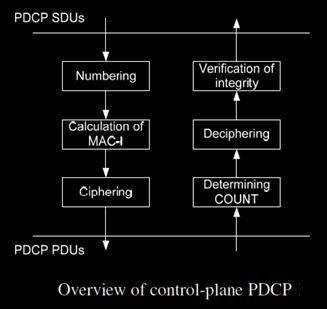PDCP layer performs the following functions:
1. Header compression and decompression plane of the user data;
2. Security features:
- encryption and deciphering the user plane and control plane data;
- the protection of the integrity and operation of the plane data;
3. Provide support functions:
- order to delivery and reorder PDU to the layer above a waiver;
- lossless transmission of user plane data associated with the RLC admitted mode.
4. To cancel the user data plane due to timeout.
PDCP layer manages data streams in a plane, and in the plane (or Protocol), only for holders of a radio channel for control (DCCH) or channel dedicated to motion (DTCH). PDCP layer architecture varies the user plane and control plane, as shown in the below 2 figures.


Each one of the main functions is explained in the following subsections. Two different types of PDU PDCP are defined in LTE: PDCP data PDUs and PDCP control PDUs. PDCP data PDUs are used for data plane both the control and the user. PDCP control PDUs are used only to transport the feedback information to the header compression and the PDCP status reports that are used in the event of a transfer of sovereignty and therefore are used only within the user’s plan.